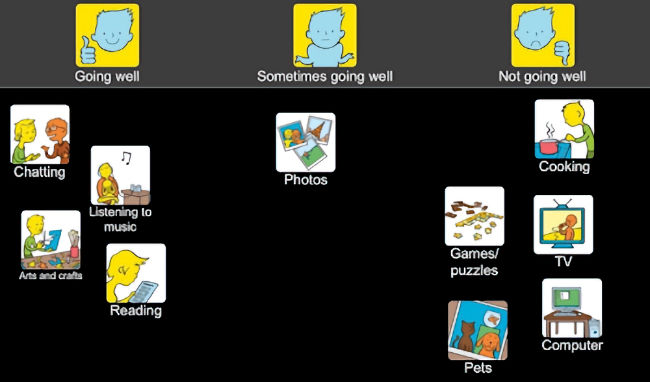Self-advocacy

What is Self-Advocacy and why is it important?
Self-advocacy is a personís ability to tell other people about their diagnosis and/or communication skills, and to know what they need to say to someone to get the help they need, rather than someone else speaking for them. This is a really important skill for independence. Developing self-advocacy skills is a gradual process but itís never too early to start working on them!
How to support your child to self-advocate:
- Be open and talk to your child about their diagnosis, celebrate their strengths and acknowledge their difficulties. The amount of detail you go into will depend on your childís level of understanding. Some children might be able to have a spoken conversation about this whereas others may benefit from the use of visuals to support their understanding.
- Have open discussions with your child about what they think helps them to feel successful and comfortable in different situations e.g. what help them at home, what helps them at school.
- Have open discussions about what you (and other people that are important to them) think helps them to reach their potential and succeed.
- Talk to them about who they would like to know about their diagnosis / difficulties and who it would be helpful / safe to tell.
- Support your child to plan how they might explain their diagnosis / communication skills (again this will include a different amount of detail depending on their language skills) and role play this.
- Support them to plan how they would ask for help in different situation, again role play this.
- Support your child to know when it is helpful for them to share their diagnosis. Think about whether there are any situations or people where it might not be helpful to share this information e.g someone online who they donít know very well.
- Ensure that other people in your childís life (teachers, grandparents, family members, friendsí parents, dance class / swimming / drama / young group leader) create a safe and supportive environment for them to practice advocating for themselves.
- Encourage your childís school to promote and celebrate diversity.
The ultimate goal is to empower your child and give them the skills they will need for the future, to be able to advocate for their own needs at college, university, work, and in their wider community.
It is important to note that it does not matter how a person communicates, they can advocate for themselves. A child or young person can advocate for themselves using spoken words, written language, symbols and sign, whichever way they find it easiest to explain their needs and what they need the other person to do to help them.
Some strategies that can support self-advocacy:
- Talking Mats Ė this approach supports the person to identify and communicate what they like / donít like and find easy / difficult / helpful / unhelpful by sorting picture cards of activities, situations and strategies. You could create this at home with just a pen and paper.

- Communication passport Ė a communication passport shares lots of information about a person, it can be put together by the person and/or people that know them well. It can include information about likes and dislikes, strengths and areas of difficulty, how a person best communicates and what can facilitate their communication and strategies that are helpful to them. Once you and your child have created their communication passport it can be shared with anyone that they feel would find it helpful. You can see an example of what this might look like and possible things to include on this link .
- DLD and Me - this book has a chapter of activities specifically to support children and young people with Developmental Language Disorder to develop their self-advocacy skills.
Last updated10 Sep 2025

